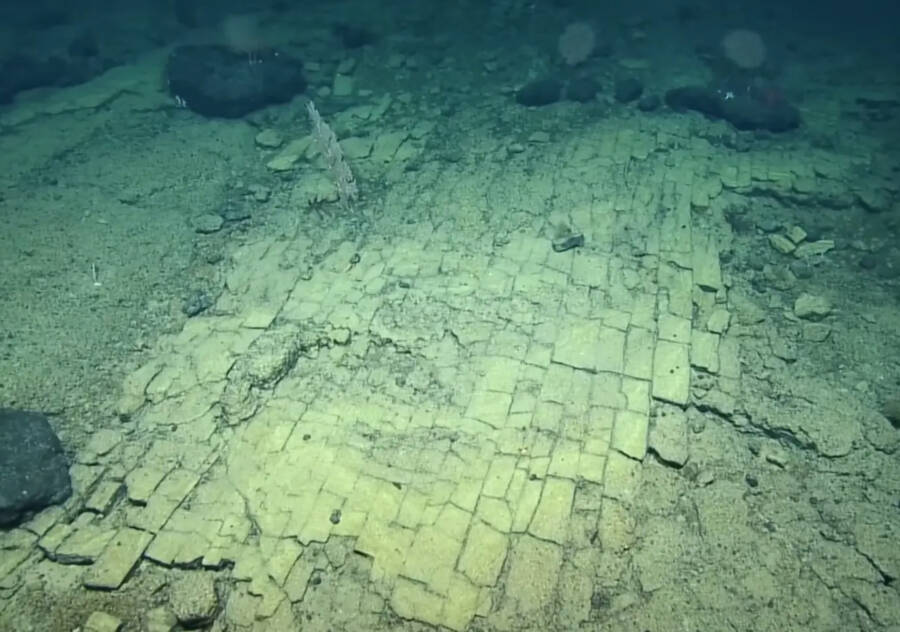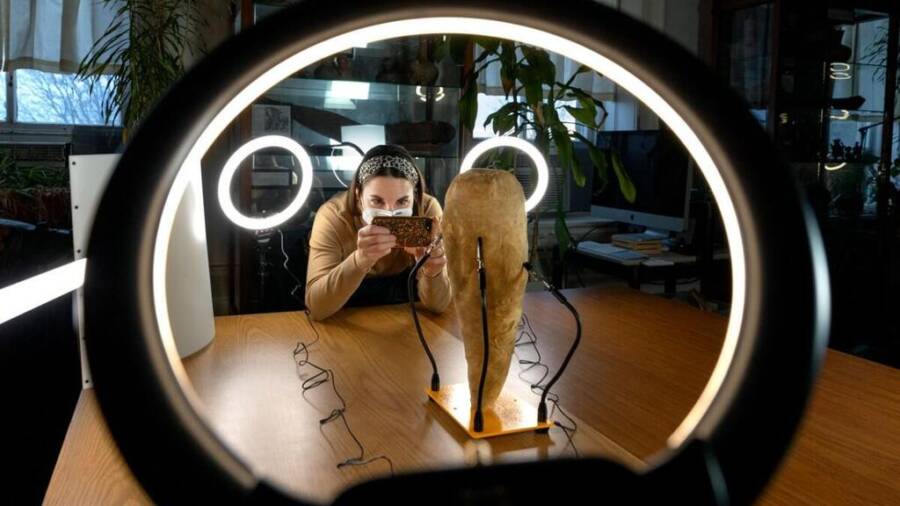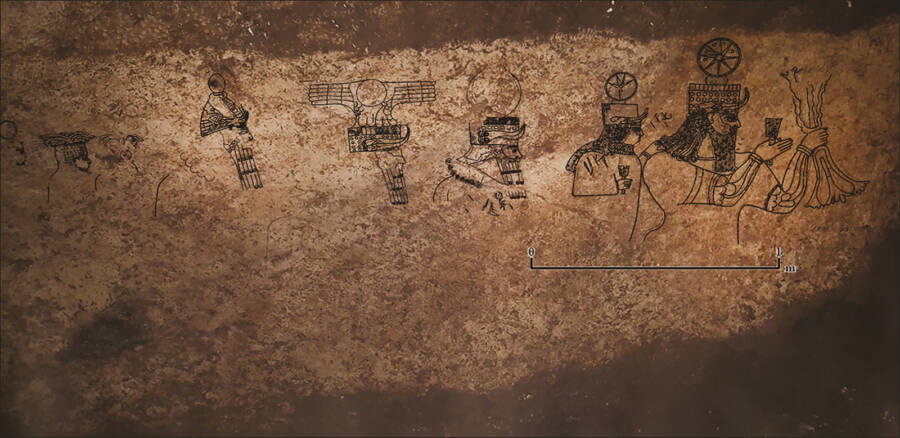"Road to Atlantis" uncovered in the Pacific, ancient Egyptian ibis mummy found in a closet at Cornell, centuries-old fertility complex unearthed in Turkey.
Scientists Just Discovered What Looks Like A Paved Pathway On The Floor Of The Pacific

YouTubeWhat at first looks like a paved road is actually a unique formation of hyaloclastite, a volcanic rock forged during eruptions before settling on the seafloor.
Northwest of Hawaii lies the Papahānaumokuakea Marine National Monument, a 582,578-square-mile protected area set aside for conservation efforts. And though this massive swathe of the Pacific is larger than all of America’s national parks combined, just three percent of it has ever been explored by humans.
Recently, scientists surveying the area’s seamounts and collecting geological samples in hopes of gaining insights into the formation of the Hawaiian Islands stumbled upon something truly astonishing. Their remote vehicle captured images of what looks like a paved undersea pathway that researchers have taken to calling the “yellow brick road to Atlantis.”
Discover more about this incredible find and the real explanation for it here.
This Ancient Egyptian Mummy That Was Forgotten In A Cornell Closet Was Just Revealed To Be A Sacred Ibis

Ryan Young/Cornell UniversityCarol Anne Barsody, a graduate student in archaeology at Cornell University, made the discovery about the ibis.
For almost one hundred years, the tiny, two-pound mummy sat in storage at Cornell University. Mislabeled as a “hawk mummy,” it didn’t draw much attention until a graduate student picked it up for an experiment. Then, the mysterious mummy was revealed as an ibis, a sacrificial bird used by ancient Egyptians.
Dig deeper in this report.
An Ancient Fertility Complex From The Iron Age Was Discovered Beneath A House In Turkey

M. Önal, C. Uludağ, Y. Koyuncu; Antiquity Publications LtdThe Başbük panel depicts a number of gods and goddesses carved into the rock wall.
Usually, it’s archaeologists who make big discoveries. But in Başbük, Turkey, it was looters who stumbled upon an ancient fertility complex located beneath a local house. According to a study about the find published in the journal Antiquity, authorities noticed “a rock-incised panel” beneath a two-story home in Başbük when they foiled a looting plot in 2017.
Read on here.





